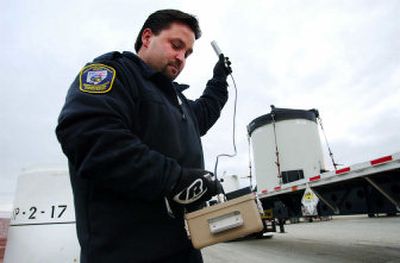Soviet-era uranium plant has future as a park

CROSBY TOWNSHIP, Ohio – The Fernald uranium foundry was built in the 1950s to help the United States defeat a clear-cut foe: The Soviet Union and its growing nuclear arsenal.
Five decades later, an ambitious $4.4 billion project to battle a different foe – the toxic stew left behind at the poster child for America’s nuclear waste scandal – is drawing to a close.
Just more than 900 of Fernald’s 1,050 acres are being turned into a park that includes prairie, wetland and woodland ecosystems, said John Homer, who oversees the restoration.
Birds not seen in Southwest Ohio in decades, including grassland dwellers Bobolinks and Dickcissels, are nesting on the site. Some endangered species have taken up residence.
Fluor Fernald, the U.S. Department of Energy contractor handling the cleanup, expects to finish by mid-September, putting the final touches on a plan approved in 1996.
When the project is complete, the site will include a treatment plant to remove contamination from the Great Miami Aquifer, a major source of drinking water for the area, and a visitors’ center that will feature displays on the Cold War, the uranium foundry and the cleanup project.
“Fernald is a fascinating symbol of the era,” said Peter Robinson, a historian at the College of Mount St. Joseph. “It helped protect the nation and reinvigorate and support the local and national economy. It made us feel safer at the time in our race with Soviet Union, but that safety and that prosperity came with tremendous costs, both in terms of the environment and the cleanup itself.”
Fernald’s mission was secret for decades. Workers purified raw uranium ore and molded it into ingots and other products that would be turned into uranium at other sites.
Even though news stories at the time reported a uranium processing plant being built, many residents thought the site was a dog food factory. Seeing the red and white checkerboard pattern on the Feed Materials Production Center’s water towers, they assumed Ralston Purina ran the factory.
Employees had to undergo a background check and get special security clearances. Signs inside the plant reminded them they were “production soldiers” and cautioned them not to talk about what went on at the foundry.
“The Cold War was reality,” said Gene Branham, president of the Fernald Atomic Trades and Labor Council, the union representing the workers. “There was a certain pride and a great deal of secrecy for workers at Fernald.”
Not until 1984, when officials revealed that 300 pounds of radioactive uranium oxide dust had been released into the environment, did residents understand what the plant really produced.
Lisa Crawford, 50, of Crosby Township, learned that her family’s well was one of three contaminated by uranium runoff from Fernald. She and her husband, Ken, were among the property owners who promptly sued National Lead of Ohio, the company that ran the foundry at the time.
She’s the president of FRESH, or Fernald Residents for Environmental Safety and Health, and a member of the Citizens Advisory Board that has guided the cleanup.
“There were times we’d go to meetings and just be like, ‘It’s never going to happen,’ ” she said. “But the last four, five years, it’s all really started to click. When you begin to see buildings go down and water towers go down and waste being shipped offsite, those are the milestones.”
Dennis Carr, now the deputy manager for the Fernald project, came to work for the foundry in 1981 as a civil engineer focusing on environmental issues. He went to work for Fluor Fernald when it was awarded the cleanup contract.
The site, he said, was a mess: 82,000 drums and almost 1 million pounds of radioactive waste were stored there. About 31 million pounds of uranium metal had to be removed, he said.
As scary as the radioactive material was, it wasn’t the biggest danger, Carr said. “From day one, we knew the industrial hazards were going to be the key element that had to be controlled,” he said.
The chemicals the workers used to process the uranium – uranium hexafluoride, raw uranium, anhydrous ammonia, nitric acid and a host of others – were often more dangerous than the uranium itself. Many were toxic or explosive. Foundry workers wore only hard hats, boots and work gloves. Years later, cleanup workers would go into production areas in full environmental suits with respirators.
Now, many workers battle cancers they believe they got from handling dangerous materials.
The U.S. Department of Energy and the U.S. Department of Labor has set up a program to compensate former atomic workers who became ill or died because of exposure to uranium, beryllium or other materials.
But many workers felt they were viewed as the bad guys once the extent of Fernald’s toxic mess became known.
“The uranium production mission really ended on a sour note. In reality, the average guy here working on the line didn’t do a bad thing. He did a great job,” said Carr.